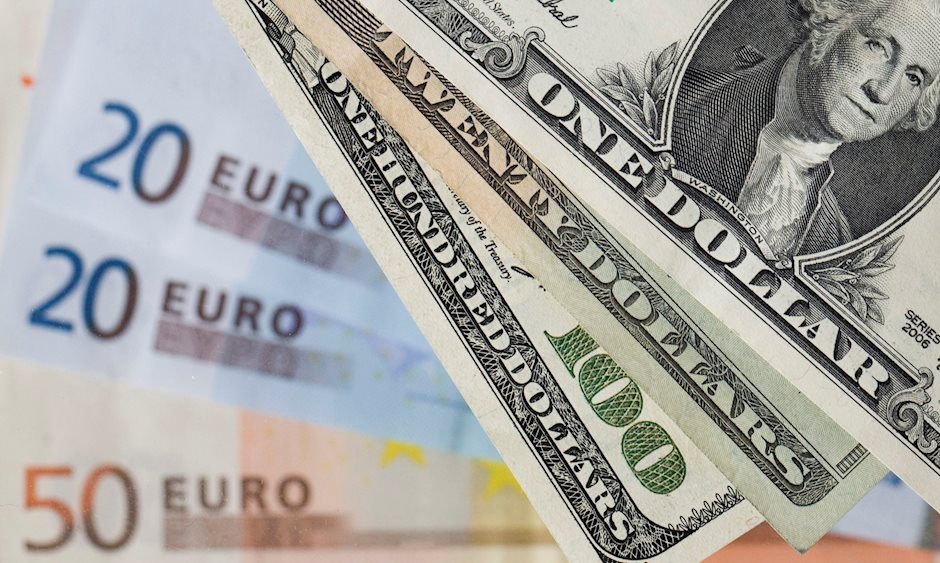EUR/USD marks yearly lows near 1.0550 ahead of Eurozone Q3 GDP, US PPI
- EUR/USD falls to 1.0546 on Thursday, the lowest since November 2023.
- Eurozone Gross Domestic Product is anticipated to report 0.4% QoQ in the third quarter.
- Traders will likely observe US October Producer Price Index data later in the North American session.

EUR/USD extends its decline for the fifth consecutive day, trading near 1.0550, marking fresh yearly lows during Thursday's Asian session. This downside of the pair is mainly attributed to the strengthening US Dollar (USD), driven by "Trump trades."
Traders await the release of Gross Domestic Product (GDP) data for the Eurozone on Thursday, with the third-quarter GDP figure expected to confirm a preliminary growth estimate of 0.4% quarter-over-quarter. Meanwhile, the year-over-year GDP is forecast to show a modest 0.9% growth for Q3, indicating a lackluster economic performance in the region.
The focus will shift to European Central Bank (ECB) President Christine Lagarde, who is expected to deliver remarks at the Choiseul Sovereignty Awards 2024 ceremony in Paris, France. Meanwhile, Fed Chair Jerome Powell will be in the spotlight during a panel discussion titled "Global Perspectives," hosted by the Federal Reserve Bank of Dallas.
The US Dollar Index (DXY), which tracks the value of the US Dollar against six major peers, remains steady around 106.60, its highest level since November 2023, supported by rising US Treasury yields. As of now, the 2-year and 10-year US Treasury yields are at 4.31% and 4.47%, respectively.
The US Consumer Price Index (CPI) rose by 2.6% year-over-year in October, matching market expectations, following a 2.4% increase in the previous month. The monthly CPI held steady at 0.2% MoM as expected. Meanwhile, the core CPI, which excludes the more volatile food and energy sectors, met market expectations, holding at 0.3% MoM and 3.3% on an annualized basis.
Euro FAQs
The Euro is the currency for the 19 European Union countries that belong to the Eurozone. It is the second most heavily traded currency in the world behind the US Dollar. In 2022, it accounted for 31% of all foreign exchange transactions, with an average daily turnover of over $2.2 trillion a day. EUR/USD is the most heavily traded currency pair in the world, accounting for an estimated 30% off all transactions, followed by EUR/JPY (4%), EUR/GBP (3%) and EUR/AUD (2%).
The European Central Bank (ECB) in Frankfurt, Germany, is the reserve bank for the Eurozone. The ECB sets interest rates and manages monetary policy. The ECB’s primary mandate is to maintain price stability, which means either controlling inflation or stimulating growth. Its primary tool is the raising or lowering of interest rates. Relatively high interest rates – or the expectation of higher rates – will usually benefit the Euro and vice versa. The ECB Governing Council makes monetary policy decisions at meetings held eight times a year. Decisions are made by heads of the Eurozone national banks and six permanent members, including the President of the ECB, Christine Lagarde.
Eurozone inflation data, measured by the Harmonized Index of Consumer Prices (HICP), is an important econometric for the Euro. If inflation rises more than expected, especially if above the ECB’s 2% target, it obliges the ECB to raise interest rates to bring it back under control. Relatively high interest rates compared to its counterparts will usually benefit the Euro, as it makes the region more attractive as a place for global investors to park their money.
Data releases gauge the health of the economy and can impact on the Euro. Indicators such as GDP, Manufacturing and Services PMIs, employment, and consumer sentiment surveys can all influence the direction of the single currency. A strong economy is good for the Euro. Not only does it attract more foreign investment but it may encourage the ECB to put up interest rates, which will directly strengthen the Euro. Otherwise, if economic data is weak, the Euro is likely to fall. Economic data for the four largest economies in the euro area (Germany, France, Italy and Spain) are especially significant, as they account for 75% of the Eurozone’s economy.
Another significant data release for the Euro is the Trade Balance. This indicator measures the difference between what a country earns from its exports and what it spends on imports over a given period. If a country produces highly sought after exports then its currency will gain in value purely from the extra demand created from foreign buyers seeking to purchase these goods. Therefore, a positive net Trade Balance strengthens a currency and vice versa for a negative balance.
Author

Akhtar Faruqui
FXStreet
Akhtar Faruqui is a Forex Analyst based in New Delhi, India. With a keen eye for market trends and a passion for dissecting complex financial dynamics, he is dedicated to delivering accurate and insightful Forex news and analysis.

















